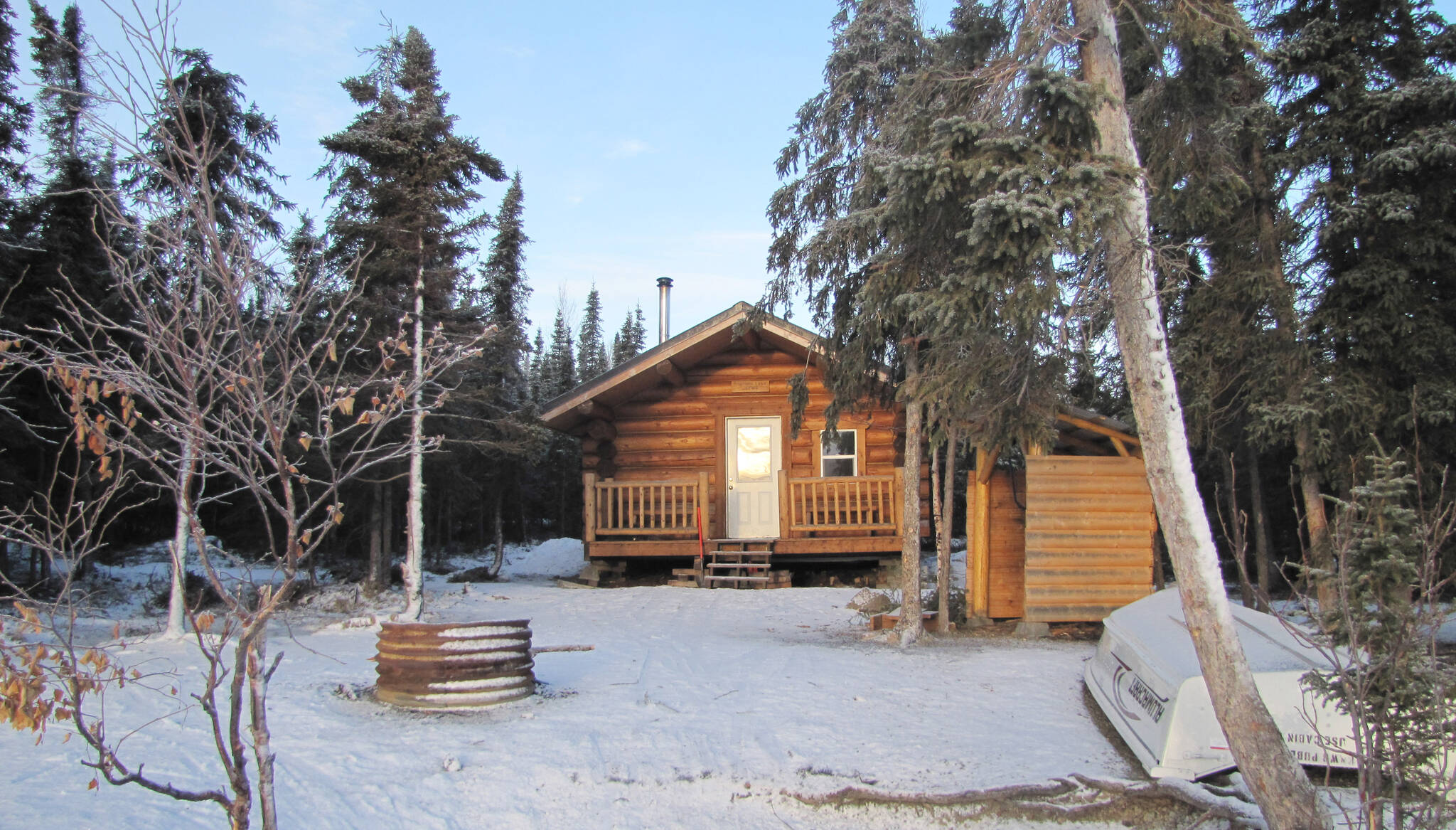By Kevin Painter
Peninsula Clarion Contributor
“Did you hear that?” I said to my wife and our young son as a lone wolf’s call echoed from the western hills above Engineer Lake on the Kenai National Wildlife Refuge.
“Yeah, was that what I thought it was?” said my wife. But before I could answer, another wolf, slightly farther away, called back. Then, our 9-year-old son answered, “That was a wolf.”
It was about 9 p.m., and we had just stepped outside of our abode for the night, the Engineer Lake Public Use Cabin, to look for northern lights.
The long, deep, baritone wolf howls continued for another few minutes in the cold Thanksgiving weekend night air. Then, as the last call drifted away and the stars danced above the expanse of the frozen lake, we went back inside the cabin.
We had reserved the public use cabin for the long Thanksgiving weekend. We felt especially fortunate to hear wolves in an area of the refuge that was long ago recognized and managed for its exceptional wildlife viewing.
The addition of the refuge public use cabins at Engineer Lake, Upper Ohmer and Kelly Lake have enabled thousands of Alaska families, like ours, to spend a night or two in the refuge’s Skilak Lake Recreation Area soaking in the sights and sounds of this magical part of the Kenai Peninsula.
The Skilak Recreation Area makes up only a mere 2% of the nearly 2-million-acre refuge. Yet what it may lack in size, it makes up for in wildlife viewing, photography, fishing and hiking opportunities. It was also the place where we brought our son year after year to hunt during the fall youth small game hunting season.
With our yellow lab, Utah, leading the way, we set out across the Skilak area countless times in pursuit of spruce grouse. As most hunts go, we did more observing and learning about wild game, seasonal cycles and wildlife’s role in the forest ecosystem than taking any game.
These days, the opportunity to hunt as a family in an easily accessible area that promotes youth hunting, conservation, wildlife viewing and other recreational pursuits is a treasured find. Due to its easy access and the hundreds of thousands of visitors it naturally draws each year, I am grateful the U.S. Fish and Wildlife Service manages this very small area for just youth and limited archery hunting.
The Engineer Lake cabin, where we stayed, is one of 14 public use cabins on the refuge. Over the years, we rented this cabin and others through recreation.gov, an online reservation system.
As we awoke the next morning, the sun was slowly making its way above the Kenai Mountains on the southern horizon. As we looked out to the frozen, snow-covered Engineer Lake, we spotted what looked like a black wolf standing about 500 yards away. A quick grab for the binoculars confirmed, indeed, it was a black wolf.
We found two additional gray wolves as we scanned the area around the wolf. They were calmly lounging around, awaiting the sunrise. As they stretched and yawned, we watched the wolves from the public use cabin windows for an entrancing 15 minutes before they decided to make their way eastward across the lake.
As the last wolf trotted out of sight, we went about packing up our gear for the trek back across the lake to the parking lot and our truck. When we got on the lake, we quickly came across the wolf tracks. Almost as big as your hand, the large tracks were everywhere.
Then we started seeing other tracks intermingled. They were snowshoe hare tracks — lots and lots of snowshoe hare tracks! As we roamed around the lake, we began to piece together what played out over the course of the night as we slept soundly in the public use cabin.
The wolves likely were hunting in the western hills above the lake when they jumped and started chasing the numerous hares. The hares made a mad dash for the snow-covered frozen lake. Once there, they dug a slight depression and hunkered down out of the open, adorned in their perfect winter camouflage. This strategy worked for dozens of snowshoe hares except for one.
We came across the tracks of a hare running from the lakeshore toward the middle of the lake, but directly alongside its tracks were large wolf tracks. The two converged about 75 yards out on the lake, and there, the story ended with a few scraps of snowshoe hare fur and a bright blood stain in the snow.
For that moment in time, we were witness to an age-old relationship that has played and replayed through the millennium in Alaska. The memories from that weekend at the refuge’s public use cabin have stayed with my family all these years later, and I’m sure they will for the rest of our lives.
Kevin Painter has been a ranger for the National Wildlife Refuges in Alaska for over 20 years. When not working to help people enjoy their refuges, he’s outside experiencing the sights and sounds of wild Alaska firsthand with his family. You can find more information on the Refuge at http://kenai.fws.gov or http://www.facebook.com/kenainationalwildliferefuge. Look for Refuge Notebook Articles on the first and third Fridays of each month or Find past Refuge Notebook articles (1999–present) at https://www.fws.gov/kenai-refuge-notebook.


